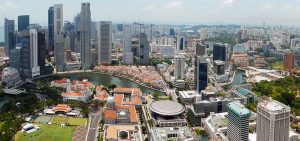The concept of smart cities represents a fundamental shift in how we approach urban development. As global urbanization accelerates, with more than half the world’s population now living in cities, the need for innovative, sustainable solutions has never been more critical. Smart cities leverage cutting-edge technology and data-driven insights to create more efficient, livable, and environmentally responsible urban environments.

The Technology Behind Smart Cities
At the heart of smart city development lies the Internet of Things (IoT), which connects various urban systems through networks of sensors and devices. These technologies enable real-time monitoring and management of everything from traffic flow to energy consumption. Smart traffic lights adjust timing based on actual traffic patterns, while intelligent waste management systems optimize collection routes and schedules.
Energy efficiency stands as a cornerstone of smart urban planning. Solar panels integrated into building designs, smart grids that distribute power more efficiently, and LED streetlights that adjust brightness based on usage patterns all contribute to reduced energy consumption. These systems not only lower costs but significantly decrease urban carbon footprints.
Green Infrastructure and Urban Design
Modern urban development increasingly emphasizes green infrastructure as both an environmental necessity and quality-of-life enhancer. Green roofs and walls help regulate building temperatures naturally while filtering air pollutants. Urban forests and strategically placed parks create cooling microclimates that combat the heat island effect common in dense urban areas.
Water management systems have evolved beyond traditional drainage to include permeable pavements, bioswales, and rainwater harvesting systems. These innovations help cities manage stormwater more effectively while reducing strain on existing infrastructure. Green corridors connecting parks and natural areas provide wildlife habitats and recreational spaces for residents.
Community-Centered Development
Successful smart cities prioritize human-centered design that fosters community engagement and social cohesion. Mixed-use developments combine residential, commercial, and office spaces within walkable neighborhoods, reducing transportation needs and creating vibrant local economies. Public spaces designed for interaction and cultural activities strengthen community bonds.
Digital inclusion ensures all residents can access and benefit from smart city technologies. Public Wi-Fi networks, digital literacy programs, and accessible interfaces for city services help bridge the digital divide that might otherwise exclude certain populations from smart city benefits.
Challenges and Future Directions
While smart cities offer tremendous potential, implementation faces significant challenges. Privacy concerns around data collection, cybersecurity risks, and the substantial initial investment required can slow adoption. Additionally, ensuring equitable access to smart city benefits across all socioeconomic groups remains an ongoing concern.
The future of urban development will likely see even greater integration of artificial intelligence and machine learning to predict and respond to urban challenges before they become critical. Climate resilience will become increasingly important as cities adapt to changing weather patterns and rising sea levels.
Smart cities represent more than technological advancement; they embody a holistic approach to creating sustainable, equitable, and livable urban environments for future generations.